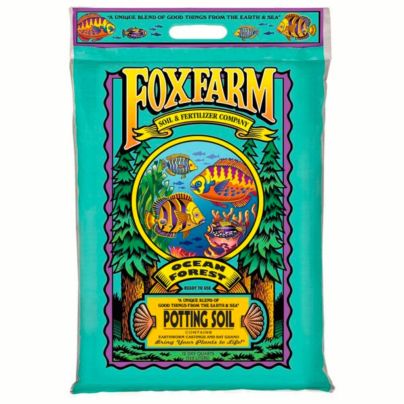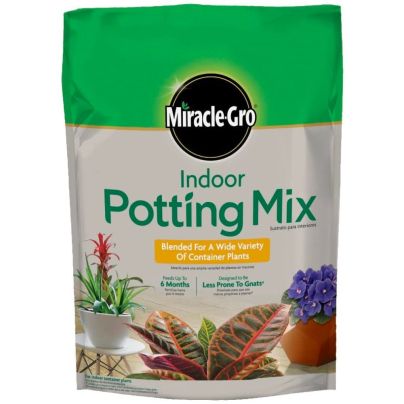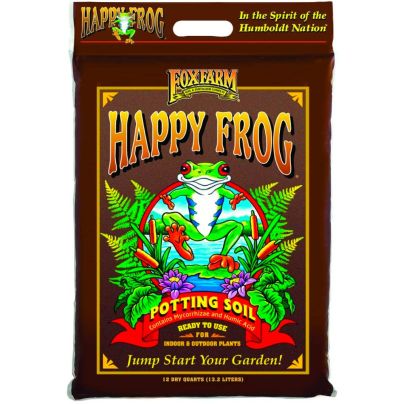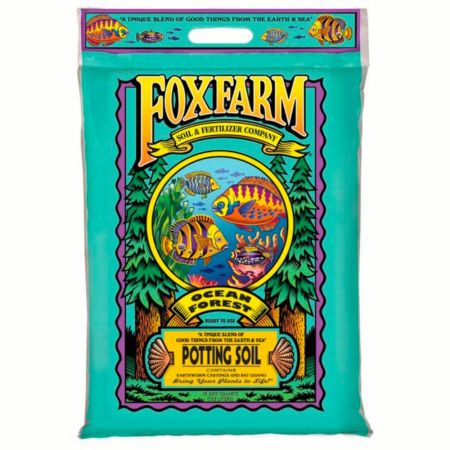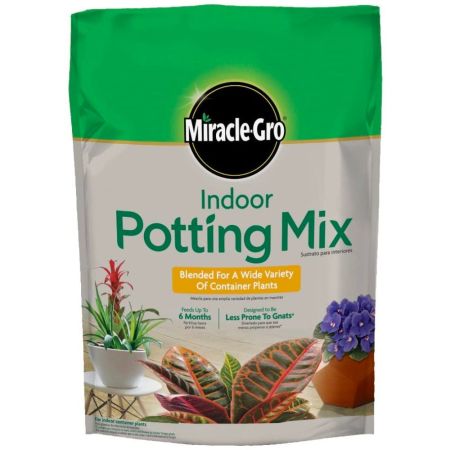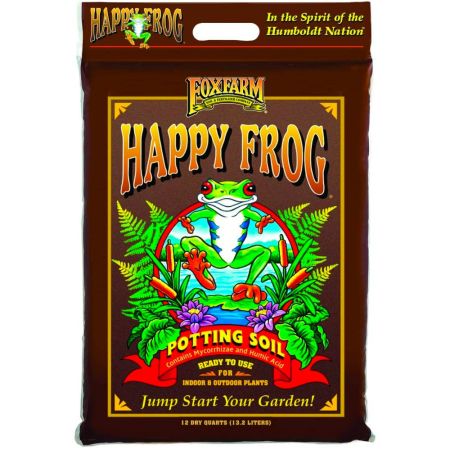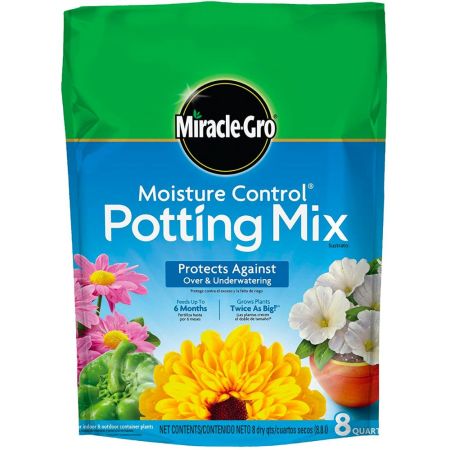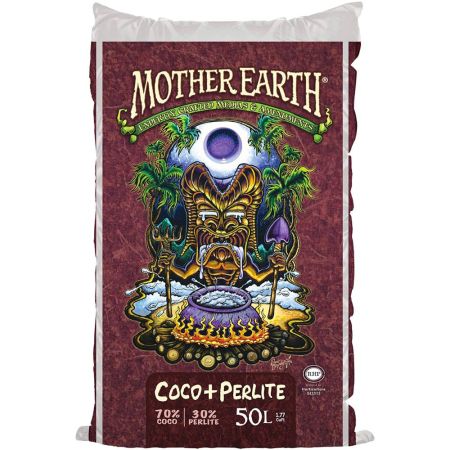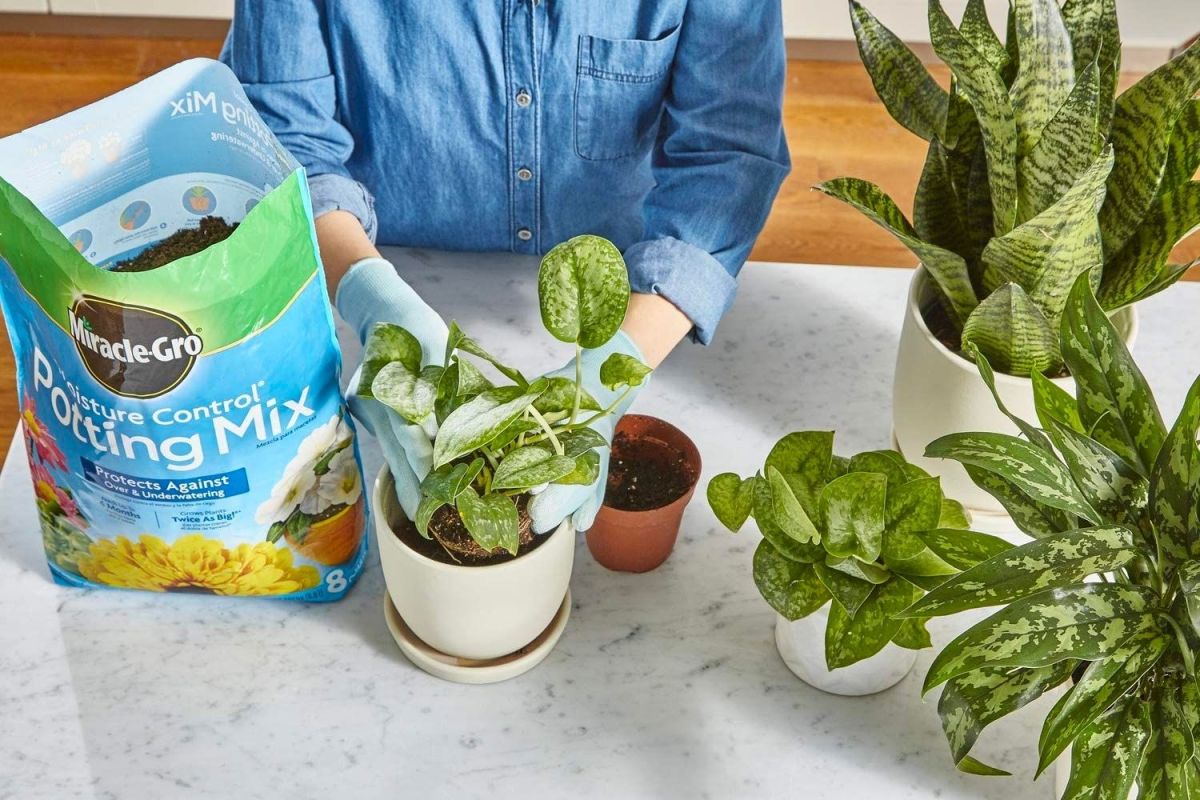
We may earn revenue from the products available on this page and participate in affiliate programs. Learn More ›
The pothos (Epipremnum aureum) is available in a variety of cultivars, including golden pothos, marble queen, and Shangri la. The plant is so resilient that it’s earned the nickname “Devil’s Ivy” because it tolerates low-light environments, and its tendrils can trail up to 40 feet if left untrimmed.
Cultivating the most out of a pothos plant takes the right combination of care. As not every all-purpose houseplant potting mix is suitable for this plant, it’s important to find a soil that drains well, contains the ideal nutritional components, and retains some moisture without becoming soggy. Ahead, learn what to look for when shopping for the best soil for pothos and find out why the following products are among the top options for growing this popular houseplant.
- BEST OVERALL: FoxFarm Ocean Forest Organic Garden Potting Soil
- BEST VALUE: Miracle-Gro Indoor Potting Mix
- BEST MICROBE ENHANCED: FoxFarm Happy Frog Potting Soil
- BEST MOISTURE RETENTION: Miracle-Gro Moisture Control Potting Mix
- BEST FOR AERATION: Mother Earth Coco Plus Perlite Mix
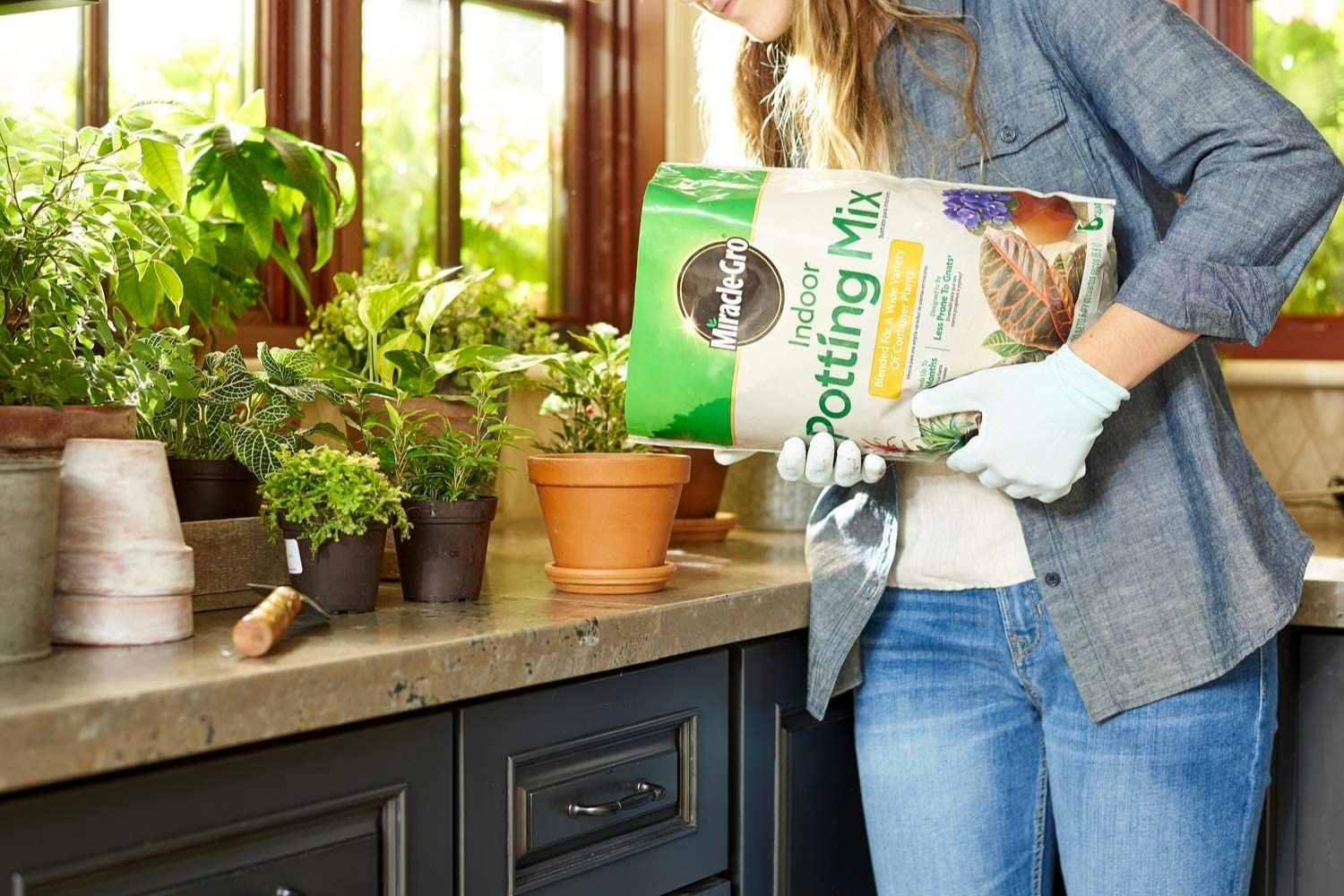
What to Consider When Choosing the Best Soil for Pothos
Pothos is a suitable plant to grow in hanging baskets, where its long lush vines can trail downward or be trained to grow over windows and trellises. The plant grows well in low to medium light, with the more colorful variegated pothos preferring a bit more light, such as near a window with a sheer curtain to diffuse the light. Like other houseplants, pothos plants absorb carbon dioxide and release oxygen, making them a desirable addition to a home for their plant health benefits as well as decorative appeal.
Types of Soil for Pothos
Suitable growing mixes for pothos contain ingredients that allow the plant’s roots to access oxygen easily. While many ordinary houseplant soil mixes can grow pothos, avoid potting this plant in soil designed for succulents and cactus. Succulent soils drain too rapidly and don’t retain the moisture pothos craves. Also avoid planting pothos in garden soil—it’s too compact and may contain insects like gnats that can infest the home and spread to other houseplants.
Even though most indoor grow mixes are not labeled as specifically for pothos, suitable blends usually contain one or more of the following ingredients.
- Bark: Typically from pine or fir trees, bark keeps the mixture light and encourages drainage.
- Coconut coir: Harvested from the coconut husk that lies between the fruit of the coconut and its hard outer shell, coco coir is absorbent and retains water. It releases that water gradually, which is beneficial to pothos.
- Perlite: A natural byproduct of volcanic glass, perlite is light and airy. It not only helps keep the potting mix from becoming compact, but it also retains a bit of moisture.
- Peat moss: Harvested from moss bogs, peat most is highly absorbent and lightweight. This ingredient, along with coco coir, is often the primary base in indoor potting mixes.
- Horticultural sand: Sand encourages draining, and it adds a bit of structural integrity to the soil to help anchor the roots of large pothos.
- Hand-mixed: Consider a mix that contains approximately 4 parts peat moss, 2 parts perlite, 1 part sand, and 1 part shredded bark.
Drainage
In addition to planting pothos in a type of soil that drains well, caring for pothos involves planting it in a pot that drains well. Select a pot with holes in the bottom to allow the water to run out. If the plant is small enough, it can be placed in a sink or tub where the water can run through easily.
If sink watering isn’t feasible, consider using a pot with a saucer that sits below the drainage holes’ level to keep the pothos’ roots from sitting in water. Drainage can be enhanced by adding 1 or 2 inches of gravel or small rocks to the bottom of the pot before adding the grow mix and the pothos plant.
Moisture Retention and Aeration
It may seem counterintuitive to plant pothos in soil that both drains well and retains moisture. Still, it provides an optimal environment for the plant’s roots that mimics its natural habitat in Southeastern Asia.
Water-retentive components, such as peat moss and coco coir, combined with ingredients that drain well, such as sand or perlite, encourage the water to run through the mix while retaining a small amount so that the plant’s roots don’t dry out between waterings.
The larger size soil components such as bark keep the mix light and create air pockets, so the roots also can access oxygen.
Nutrients
Some indoor potting mixes come with plant food included, but additional feedings are typically necessary starting within 1 to 6 months after repotting, depending on type. Once feedings begin, pothos usually do best when fertilized every 4 to 6 weeks during their active growing season (spring and summer). Fertilizing can be cut back to half during late fall and winter.
Pothos prefers a slightly acidic soil, ranging from around 6.1 to 6.8 on the pH scale. Fortunately, most indoor grow mixes also fall within that range. An unhappy plant with yellowing leaves indicates that the soil may be too alkaline. Inexpensive pH testers are available in gardening centers and online. If needed, adding peat moss to the top of the soil—called “top dressing”—can help reduce alkalinity.
Our Top Picks
To earn a spot in this lineup of some of the best soil for pothos plants, each soil had to contain ingredients that not only help promote drainage, but also retain some moisture and provide air pockets. The soil mix also may include added fertilizers and nutrients, as these can (and should) be added on an ongoing basis to maintain a healthy plant. While organized by type, any one of the following potting mixes provides optimal pothos plant care.
Best Overall
FoxFarm Ocean Forest Organic Garden Potting Soil
This indoor potting mix from FoxFarm provides a near-natural environment for newly potted plants to get a head start. It contains peat moss, forest humus, and sandy loam, all of which offer good drainage, aeration, and moisture retention.
The Ocean Forest potting mix has been amended with natural ingredients that provide nutritional support, including earthworm castings, bat guano, and fish and crab meal. The blend is designed to encourage strong root development and a robust growth habit. The mix falls within 6.3 to 6.8 on the pH scale, which is right in the optimal range for growing pothos.
Product Specs
- Ingredients: Sphagnum peat moss, forest humus, sandy loam
- Organic: No
- Added Nutrients: Earthworm castings, bat guano, fish and crab meal
Pros
- Drains well
- Retains moisture
- Optimal aeration
- Amended with natural nutrients
Cons
- Small(ish) 12-quart bag
Get the FoxFarm Ocean Forest potting soil on Amazon and at Walmart.
Best Value
Miracle-Gro Indoor Potting Mix
From a manufacturer known for quality gardening products, this Miracle-Gro Indoor Potting Mix can grow healthy pothos plants. It features a blend of sphagnum peat moss, coconut coir, and perlite. As with most Miracle-Gro mixes, it also contains a fertilizer that helps newly potted plants develop strong root systems. No additional fertilizer is necessary for the first 6 months. Best of all, it’s available at a relatively affordable price.
This is a dry mix, and some ingredients, such as dry peat moss, can be difficult to wet down the first time. To help correct this problem, Miracle-Gro has included a wetting agent. Moreover, the potting mix is formulated to reduce the risk of gnats.
Product Specs
- Ingredients: Peat moss, coir, perlite, wetting agent
- Organic: No
- Added Nutrients: Fertilizer
Pros
- Drains well
- Retains moisture
- Provides aeration to roots
Cons
- Fertilizer is synthetic
Get the Miracle-Gro indoor potting mix at Amazon, The Home Depot, and Walmart.
Best Microbe-Enhanced
FoxFarm Happy Frog Potting Soil
Happy Frog potting mix from FoxFarm is a beneficial blend of natural ingredients, including soil microbes, composted forest humus, sphagnum peat moss, and perlite, all of which help create a well-draining soil that retains moisture and provides the tiny air pockets that pothos roots love.
Happy Frog soil has been amended with earthworm castings, bat droppings, and humic acid from Leonardite (a mineral-based soil conditioner). Leonardite increases acidity in the soil, but Happy Frog also contains oyster shell and dolomite lime, ingredients that normalize acidity and adjust the pH to a favorable 6.3 to 6.8 pH. No additional fertilizing is necessary when repotting the plant, but fertilizing is recommended within 3 months of potting.
Product Specs
- Ingredients: Peat moss, forest humus, perlite
- Organic: No
- Added Nutrients: Bat droppings, humic acid, earthworm castings, oyster shell, dolomite lime
Pros
- Well-aerated
- Drains quickly
- Amended with natural nutrients
Cons
- On the pricey side
Get the FoxFarm Happy Frog potting soil on Amazon and at Walmart.
Best Moisture Retention
Miracle-Gro Moisture Control Potting Mix
Watering pothos too often can increase the risk of fungal development and root rot, but underwatering also can be detrimental. This Miracle-Gro Moisture Control Mix addresses both problems by blending components that drain well with ingredients that absorb some water and then release it slowly.
The main component is sphagnum peat moss. Additional ingredients include perlite, processed forest product, and coconut coir in a formulation that retains up to 30 percent more moisture than regular indoor potting mixes. However, the soil still drains quickly. The manufacturer also has included a balanced houseplant fertilizer, so plants won’t need additional fertilizer for 6 months.
Product Specs
- Ingredients: Peat moss, perlite, processed forest product, coco coir
- Organic: No
- Added Nutrients: Balanced houseplant fertilizer
Pros
- Enhanced moisture retention
- Drains well
- No additional fertilizer necessary for 6 months
Cons
- Fertilizer is synthetic
Get the Miracle-Gro Moisture Control potting mix at Amazon, The Home Depot, and Walmart.
Best for Aeration
Mother Earth Coco Plus Perlite Mix
The main ingredient in this potting mix, coconut coir, provides ideal aeration for growing pothos. It also contains perlite to help retain moisture. The Mother Earth mix is not only light and airy, but it also can encourage the roots to branch out for oxygen.
Coconut coir is well known for not compacting, so there’s no need to worry about the soil compressing over time. This well-drained mix protects against overwatering and over fertilizing in both indoor and outdoor pothos plants.
Slow to degrade, coconut coir lasts a long time. This product is on the pricey side, but it’s well suited for growing healthy pothos. For optimal results, add fertilizer when repotting and then add it regularly as recommended by the fertilizer manufacturer.
Product Specs
- Ingredients: Coco coir, perlite
- Organic: No
- Added Nutrients: No
Pros
- Drains very well
- Reduces overwatering risk
- Will not compact
Cons
- Pricey
Get the Mother Earth Coco Plus soil mix on Amazon.
Our Verdict
While all these products contain the ingredients necessary for growing healthy pothos, the top choice, FoxFarm Ocean Forest potting soil, meets the needs of most pothos gardeners. It drains well, retains moisture, and provides optimal aeration. Amended with natural nutrients, its pH is adjusted. Those looking for a quality mix at a more affordable price should consider Miracle-Gro indoor potting mix, which provides additional fertilizer to get pothos off to a good start.
How We Chose the Best Soil for Pothos
We extensively researched dozens of indoor potting mixes to select some of the best soil choices for pothos. To qualify for consideration, the potting mix had to contain the components necessary for pothos to thrive. Mixes, such as orchid and cactus mix, were excluded, because they drain too rapidly and don’t contain the ingredients required to retain moisture for pothos roots.
Mixes that did not contain the ingredients necessary to keep the soil from becoming compressed over time also were excluded. We considered the manufacturer’s reputation—Miracle-Gro is widely recognized as producing high-quality products—but we also looked at lesser-known brands if they contained the right soil components. Our recommendations include a variety of soil options at different price points and quantities to meet the needs of most pothos gardeners.
FAQs
Pothos is one of the easiest houseplants to grow, and some say it’s almost impossible to kill. However, the plant still needs appropriate soil and growing conditions to thrive. Those new at growing the plant may have some questions. Below are answers to some of the most popular questions about the best soil for pothos.
Q: What is the best potting soil for pothos?
The best potting soil for pothos is a soil that drains well yet retains enough moisture to keep the plant’s roots slightly damp between waterings.
Q: Is Miracle-Gro potting mix good for pothos?
While not every soil from the brand is appropriate for pothos, Miracle-Gro’s Indoor Potting Mix is suitable for growing healthy pothos, and it’s budget-friendly.
Q: How can I make my pothos grow faster?
As a regular part of pothos care, consider fertilizing the plant every 4 to 6 weeks with a balanced houseplant fertilizer as directed on the fertilizer’s package. Place it in a spot where it receives filtered—but not direct—sunlight.
Q: How long does it take for pothos to grow new leaves?
Pothos plants continually produce new leaves. If you’re attempting to start a new pothos plant from a cutting, it may take approximately 4 to 5 months to develop the roots necessary to begin new leaf growth. For best results, use a rooting hormone when starting pothos from cuttings.
Q: How do I train my pothos to trail?
When planted in a hanging basket or other pots, pothos tendrils naturally trail downward as the plant grows. No training is necessary, although you may want to arrange the tendrils to position them evenly around the pot’s rim to give the plant a balanced look.
